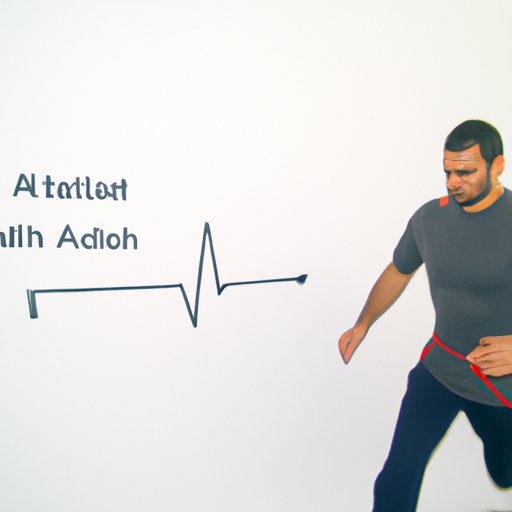Introduction
Atrial fibrillation (AFib) is a type of irregular heartbeat that affects millions of people worldwide. It occurs when the heart’s electrical system malfunctions and causes the upper chambers of the heart to quiver instead of beating normally. AFib can cause symptoms such as fatigue, dizziness, chest pain, and shortness of breath. While there is no cure for AFib, it can be managed through lifestyle changes and medications.
Exercise is often recommended for people with AFib, but it can also be risky. This article will explore the benefits and risks associated with exercising with AFib, what types of exercises are most suitable for people with AFib, and how to safely exercise with AFib.

The Best Exercises for People with Atrial Fibrillation
When it comes to exercising with AFib, low impact cardiovascular exercises are generally the safest and most effective. These include activities such as walking, swimming, and biking. These types of exercises are easier on the body and can help reduce stress, which is important for people with AFib.
Resistance training is also an important part of an exercise routine for people with AFib. Strength training helps build muscle and improve overall fitness, and it can help reduce the risk of developing other conditions such as diabetes. However, it’s important to use lighter weights and higher repetitions when resistance training with AFib.
Stretching is also beneficial for people with AFib. Stretching helps improve flexibility and range of motion, which can help reduce the risk of injury during exercise. It can also help reduce stress and tension in the body.

How to Safely Exercise with Atrial Fibrillation
It’s important to talk to your doctor before starting any exercise routine if you have AFib. Your doctor can provide advice on the best types of exercises for you, as well as any precautions you should take.
Once you’ve consulted your doctor, start slowly and gradually increase the intensity of your workouts. Monitor your heart rate while exercising, and stop if you feel any chest pain or shortness of breath. It’s also important to stay hydrated and take breaks when needed.
Don’t push yourself too hard while exercising with AFib. If you experience any unusual symptoms, stop immediately and contact your doctor.

Understanding the Connection Between Atrial Fibrillation and Exercise
Exercise can be beneficial for people with AFib, as it can help reduce stress, improve overall fitness, and lower blood pressure. Regular exercise can also help reduce the risk of stroke, heart attack, and other serious complications associated with AFib.
However, it’s important to be aware of the risks associated with exercising with AFib. It’s possible to over-exert yourself and cause your heart rate to become too high, which can lead to more severe episodes of AFib. It’s also possible to experience fatigue, dizziness, and chest pain while exercising with AFib.
Managing Atrial Fibrillation Through Regular Exercise
Regular exercise can be beneficial for people with AFib, but it’s important to set realistic goals. Start slowly and gradually increase the intensity of your workouts. Find a support system of family and friends who can help motivate you and keep you accountable. Most importantly, listen to your body and don’t push yourself too hard.
It’s also important to make sure you’re getting enough rest and eating a healthy diet. Eating a balanced diet can help your body get the nutrients it needs to function properly and reduce the risk of complications associated with AFib.
Conclusion
Exercising with AFib is possible and can even be beneficial. Low impact cardiovascular exercises, resistance training, and stretching are all suitable for people with AFib. It’s important to talk to your doctor before starting any exercise routine and to start slowly. Monitor your heart rate while exercising and don’t push yourself too hard. Finally, remember to set realistic goals and find a support system to help you manage AFib through regular exercise.
(Note: Is this article not meeting your expectations? Do you have knowledge or insights to share? Unlock new opportunities and expand your reach by joining our authors team. Click Registration to join us and share your expertise with our readers.)
